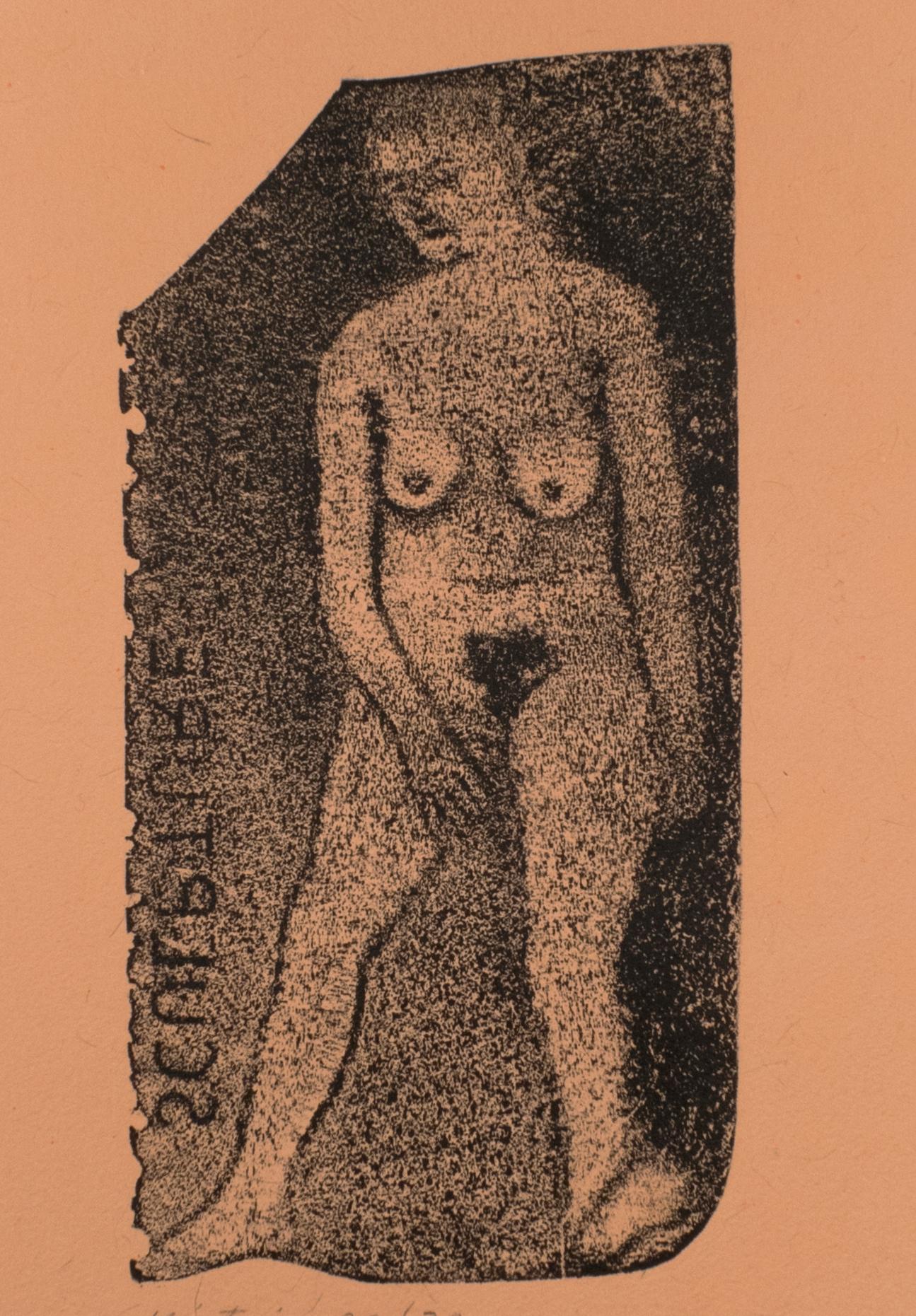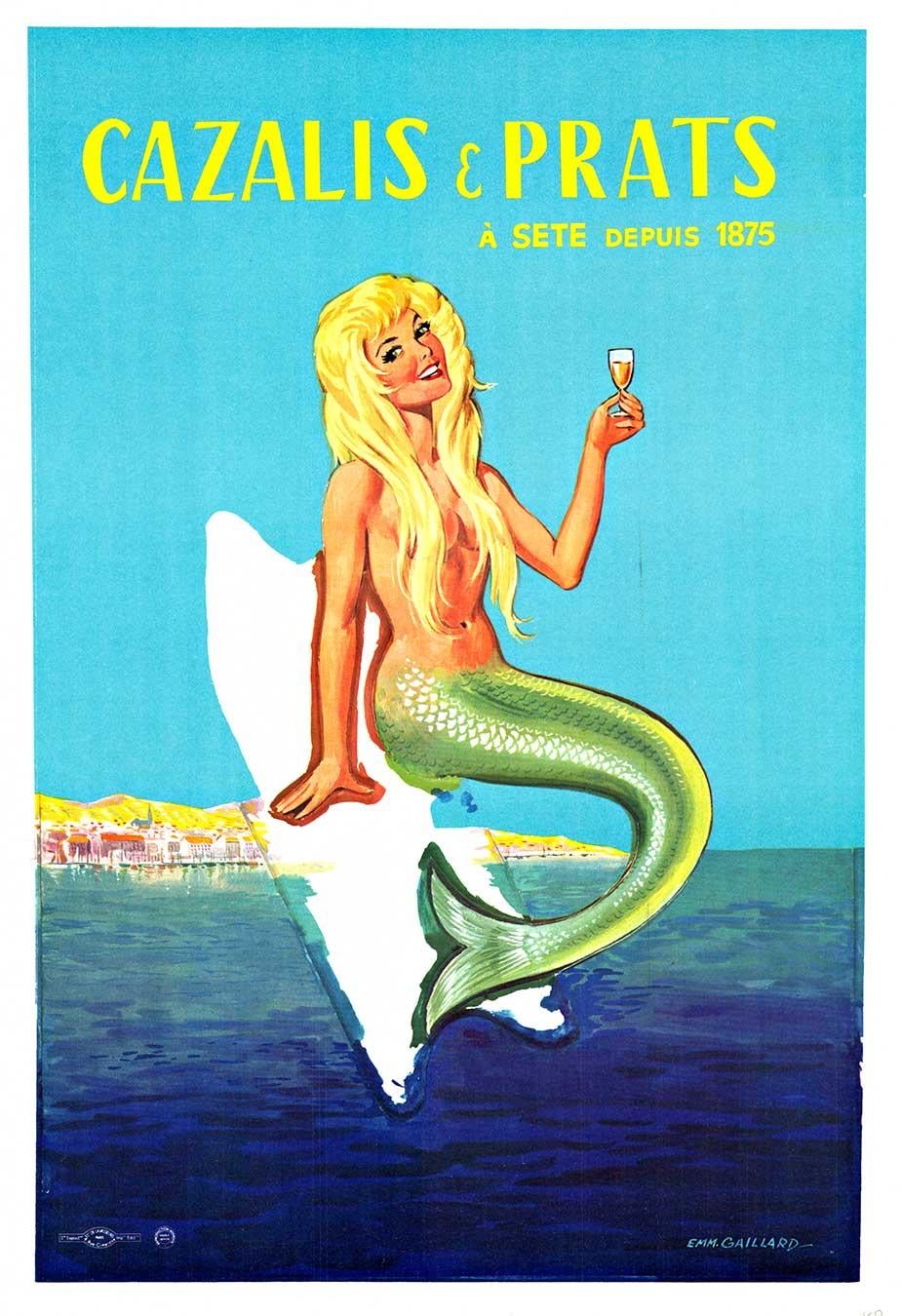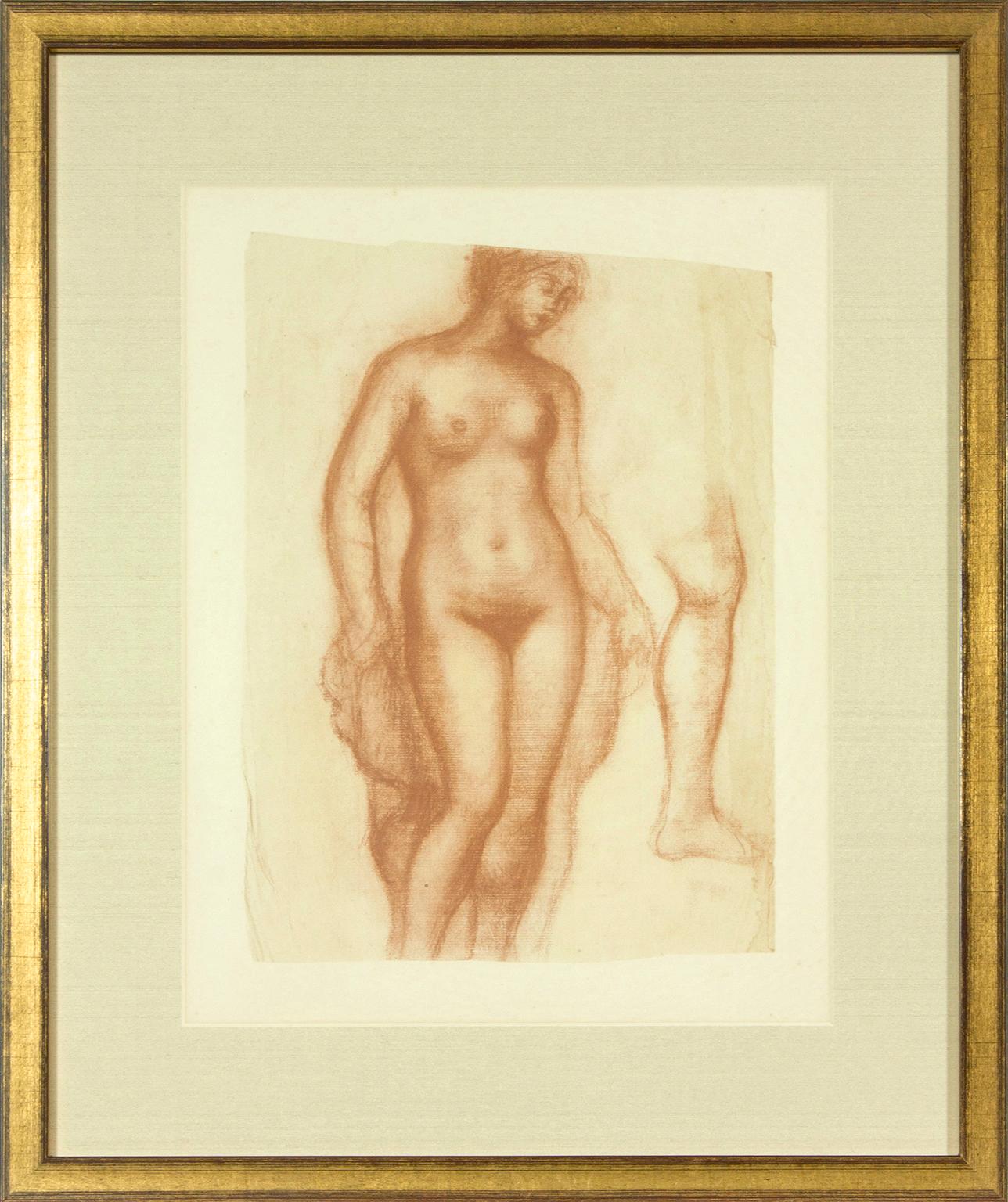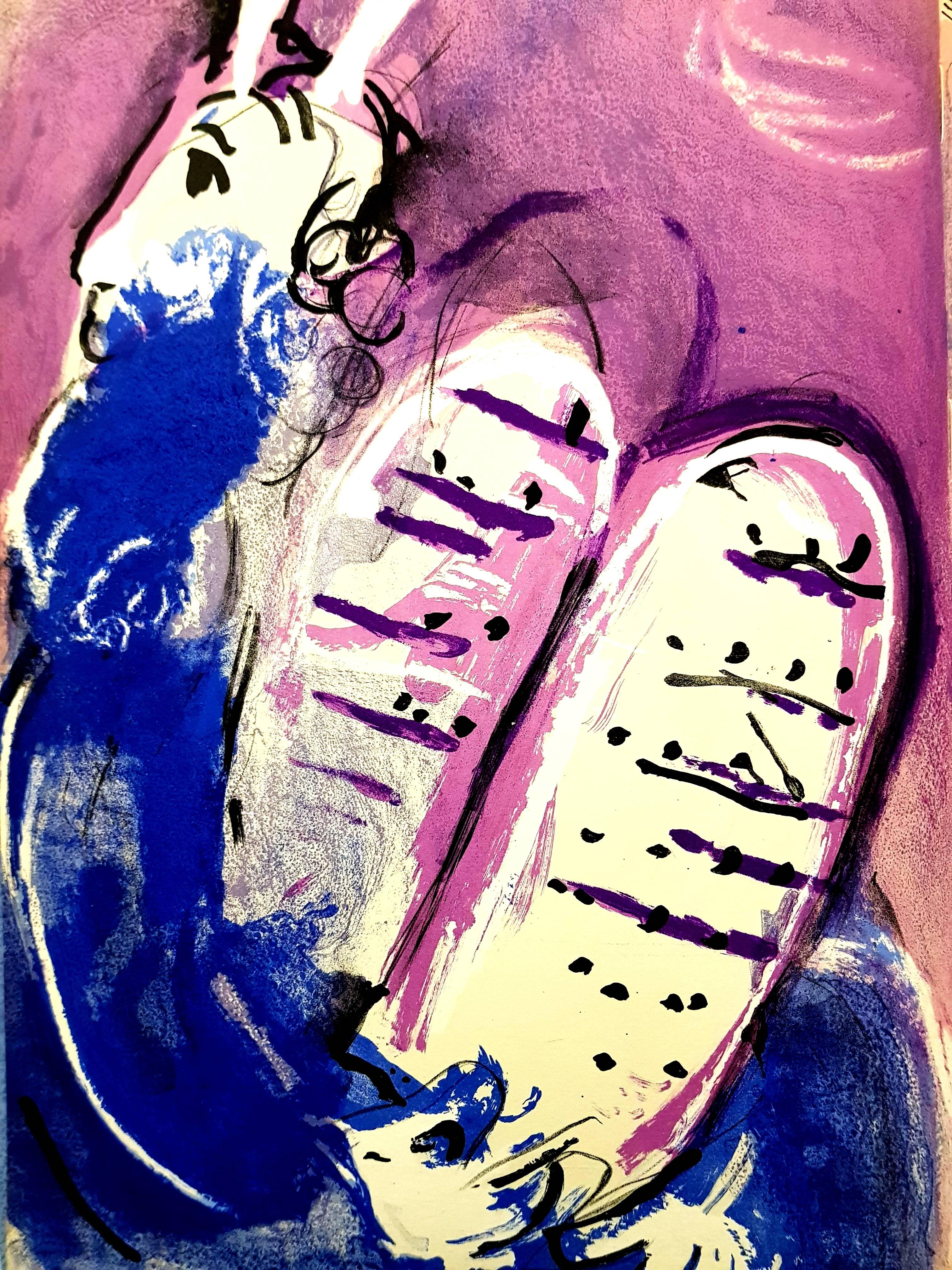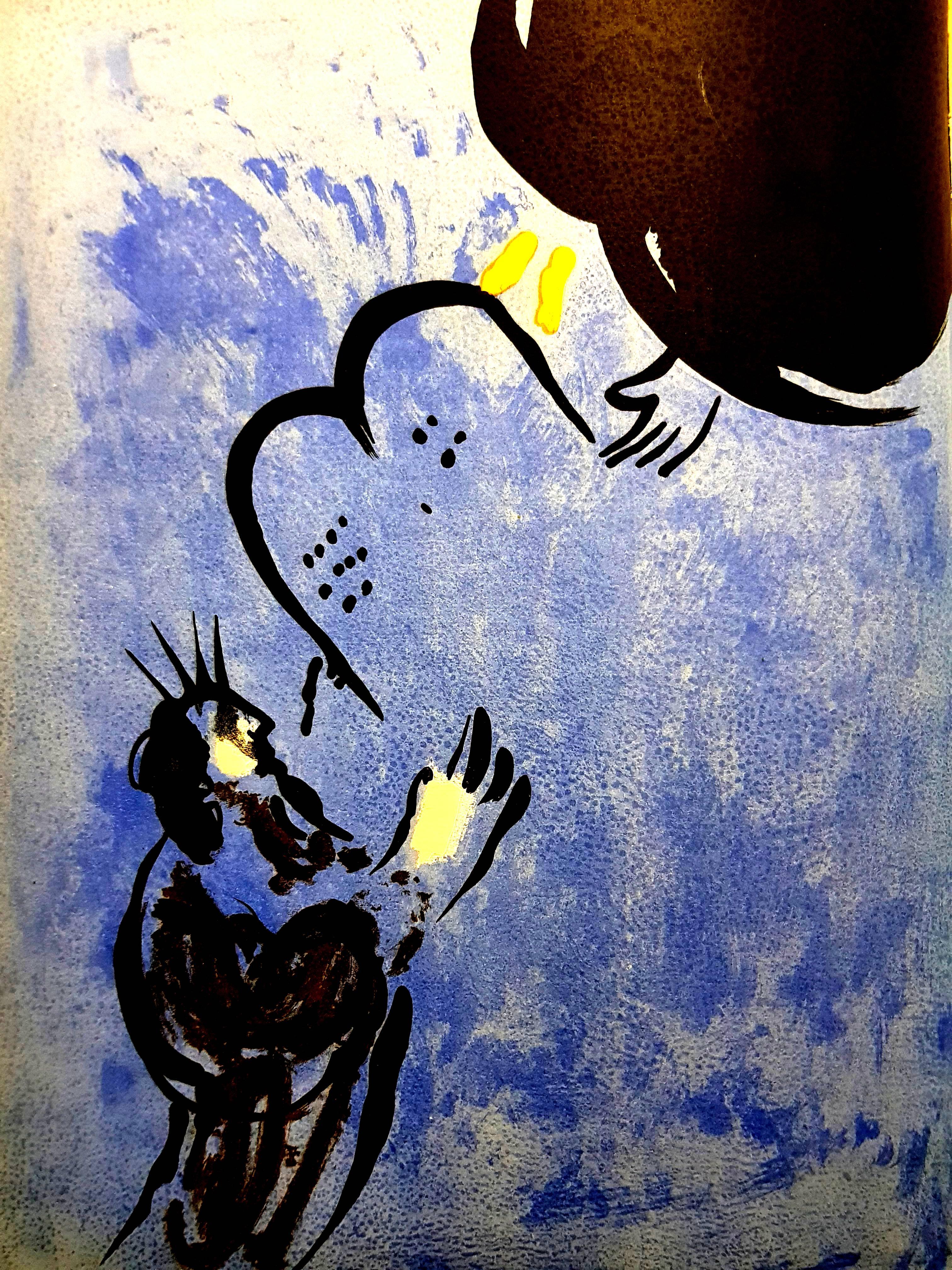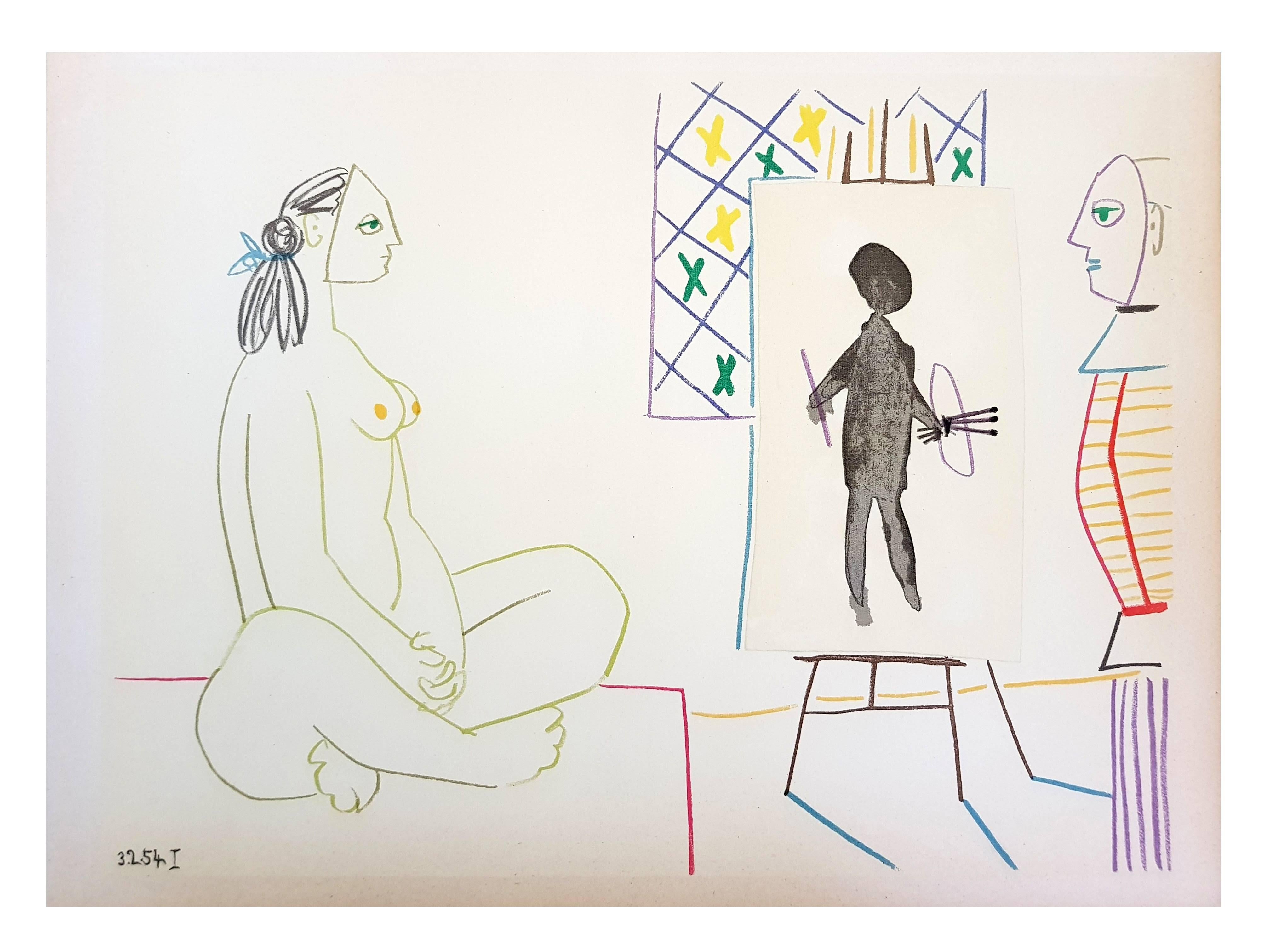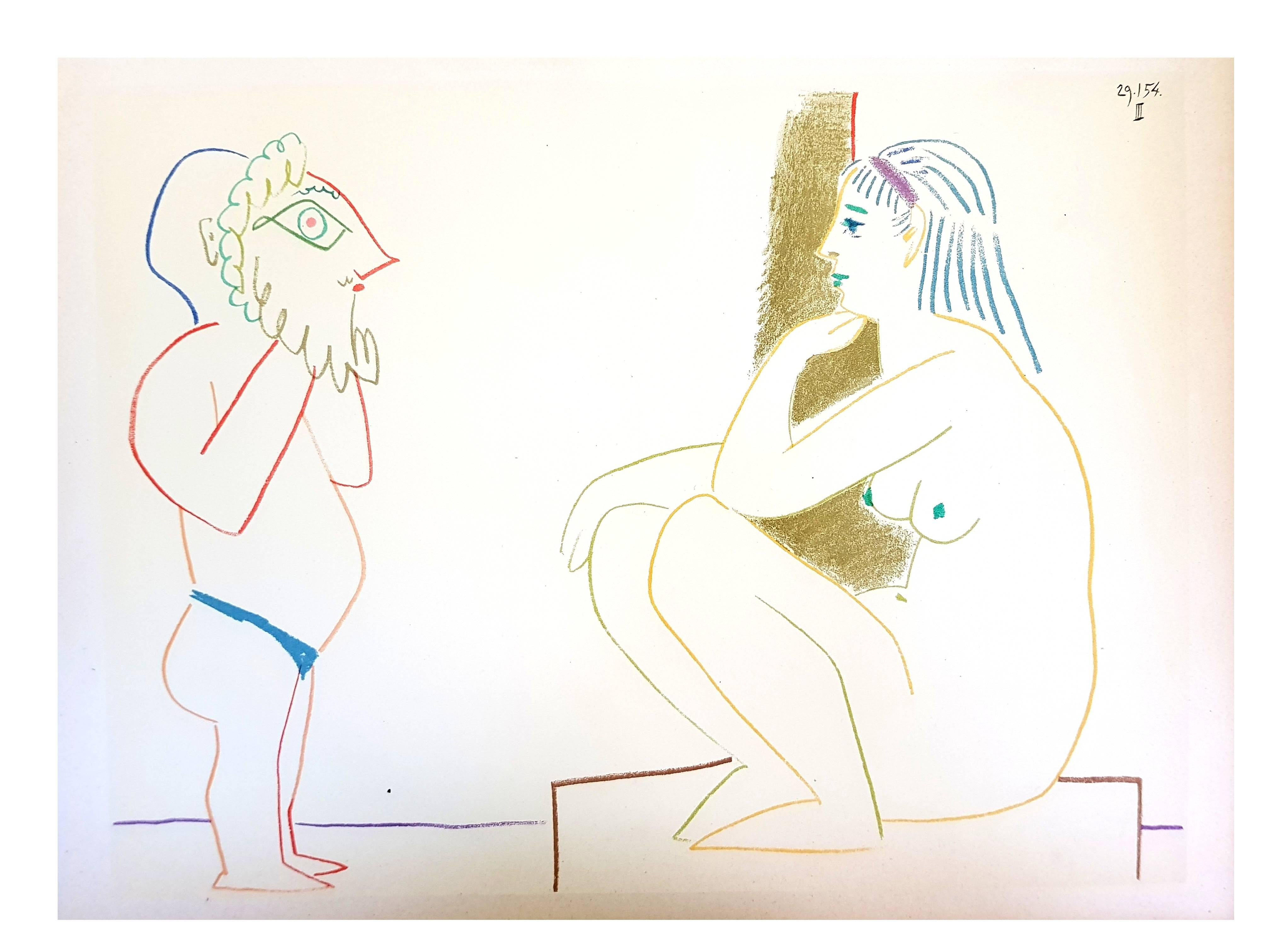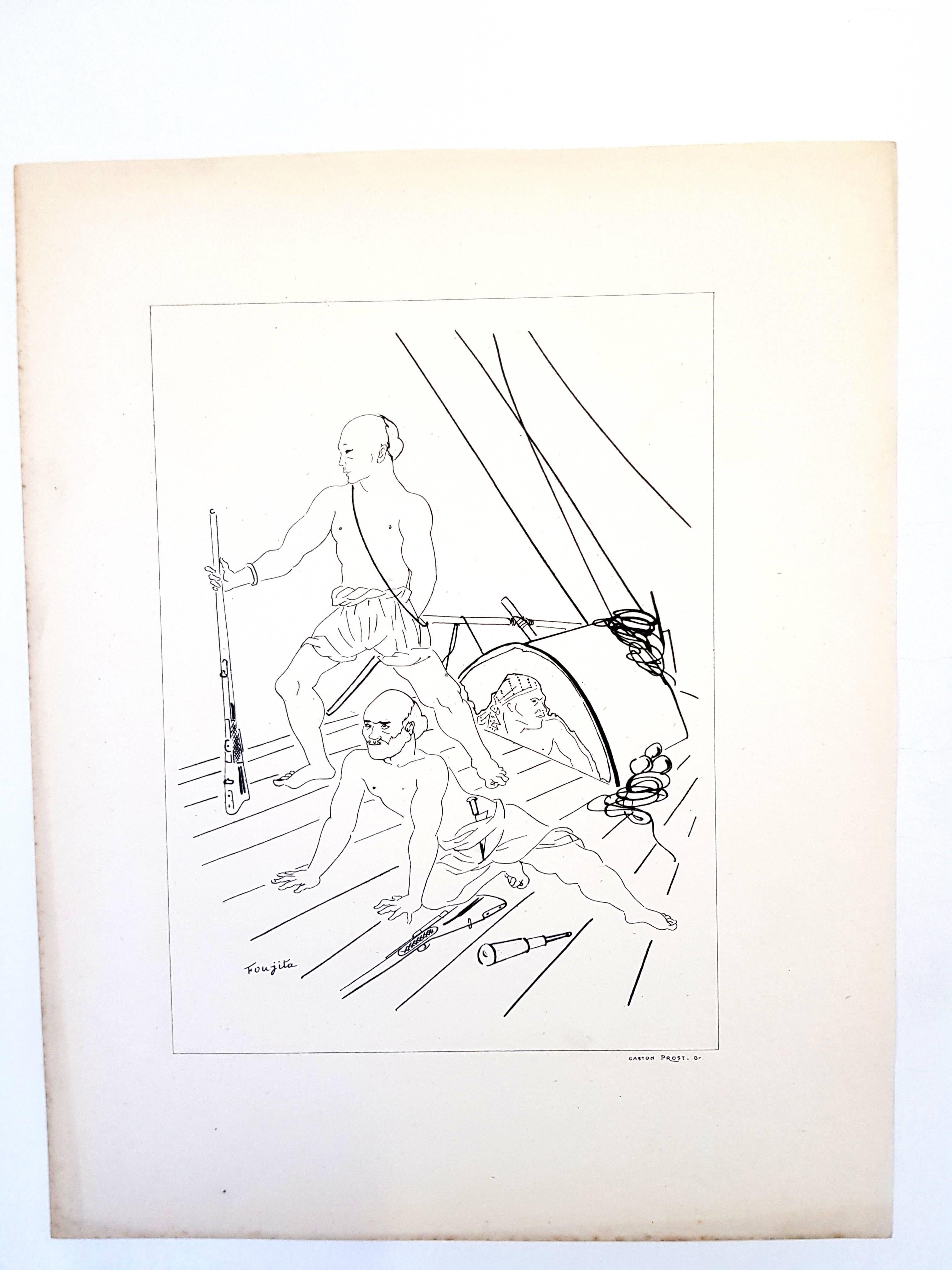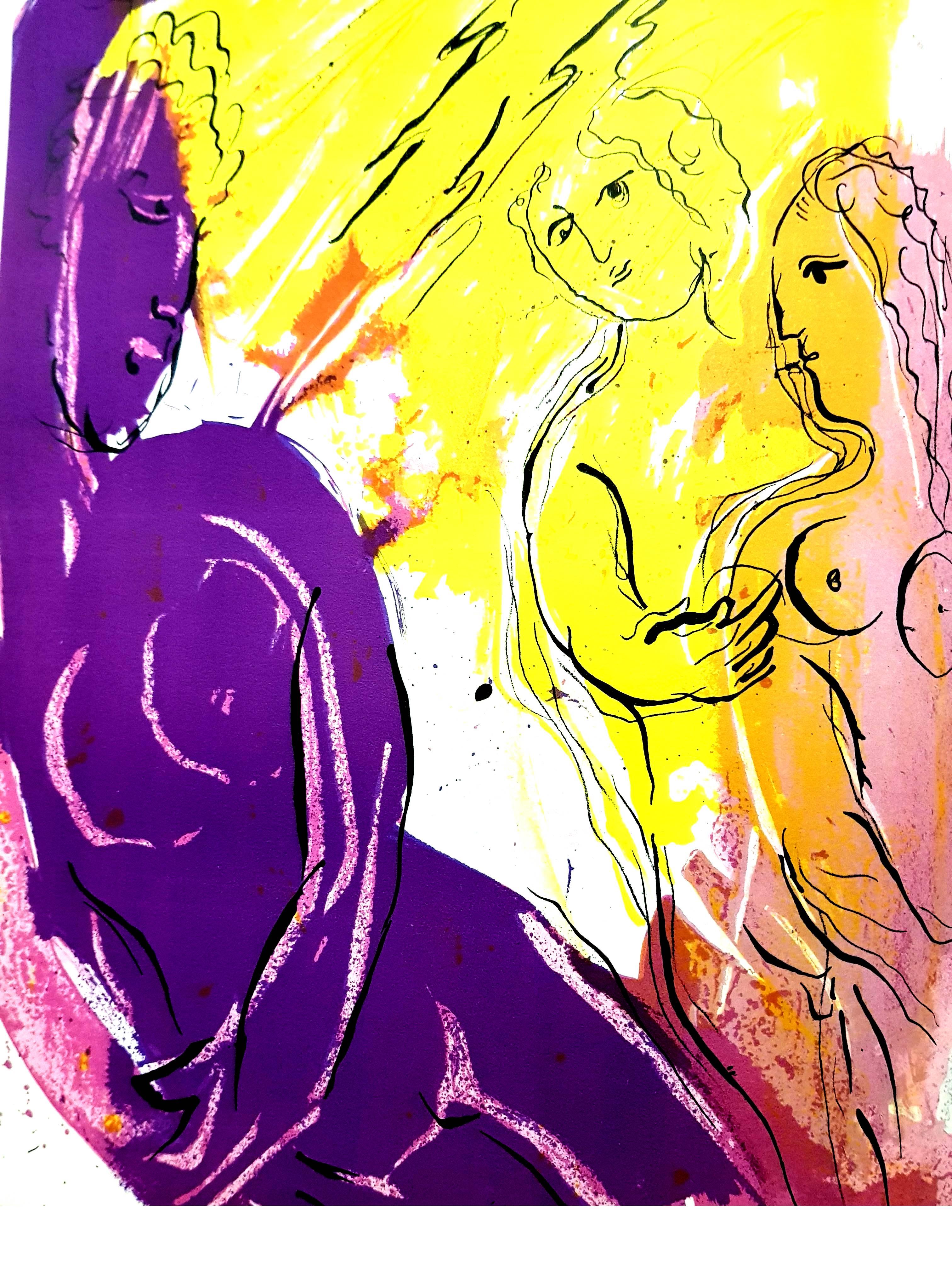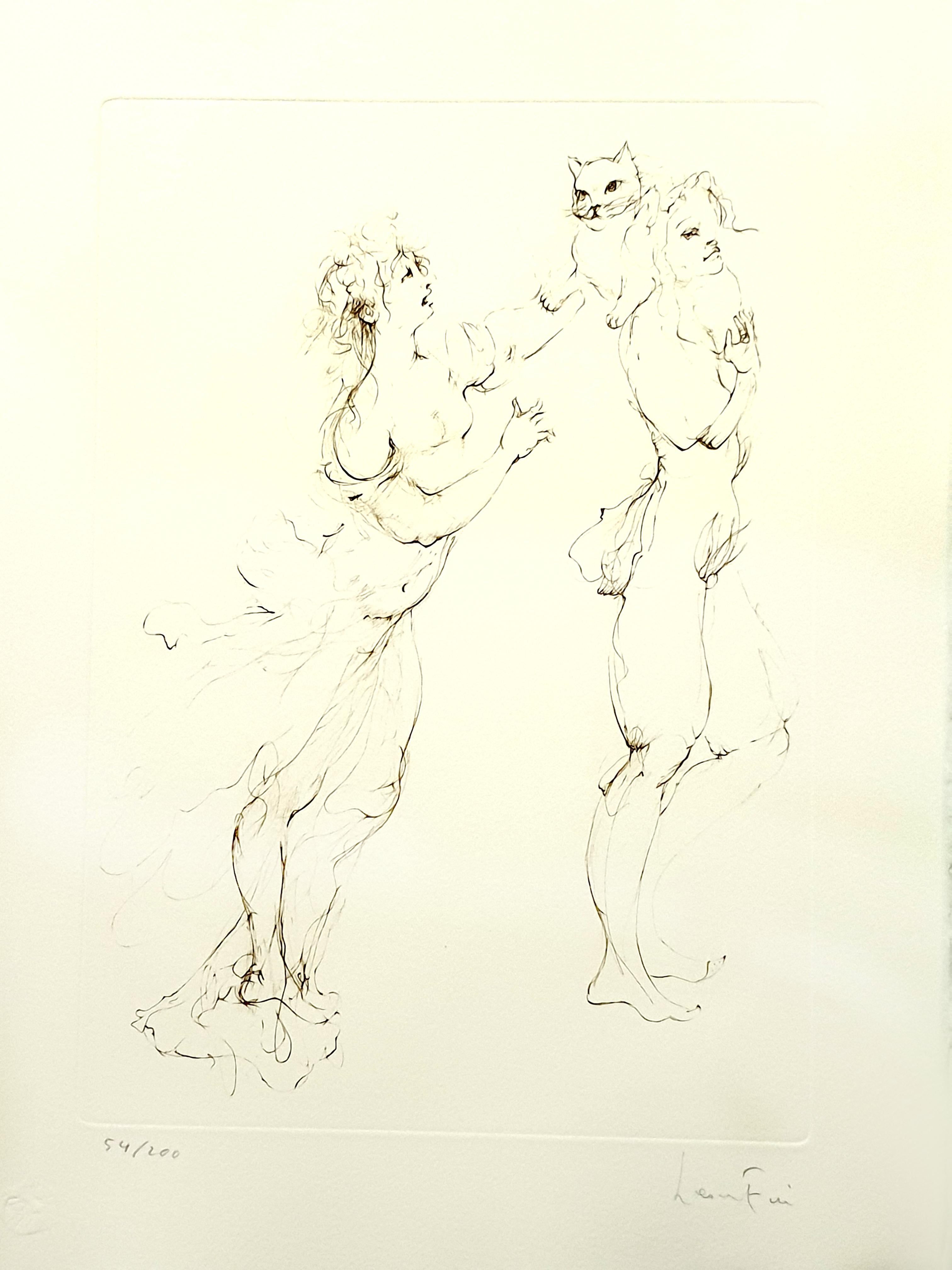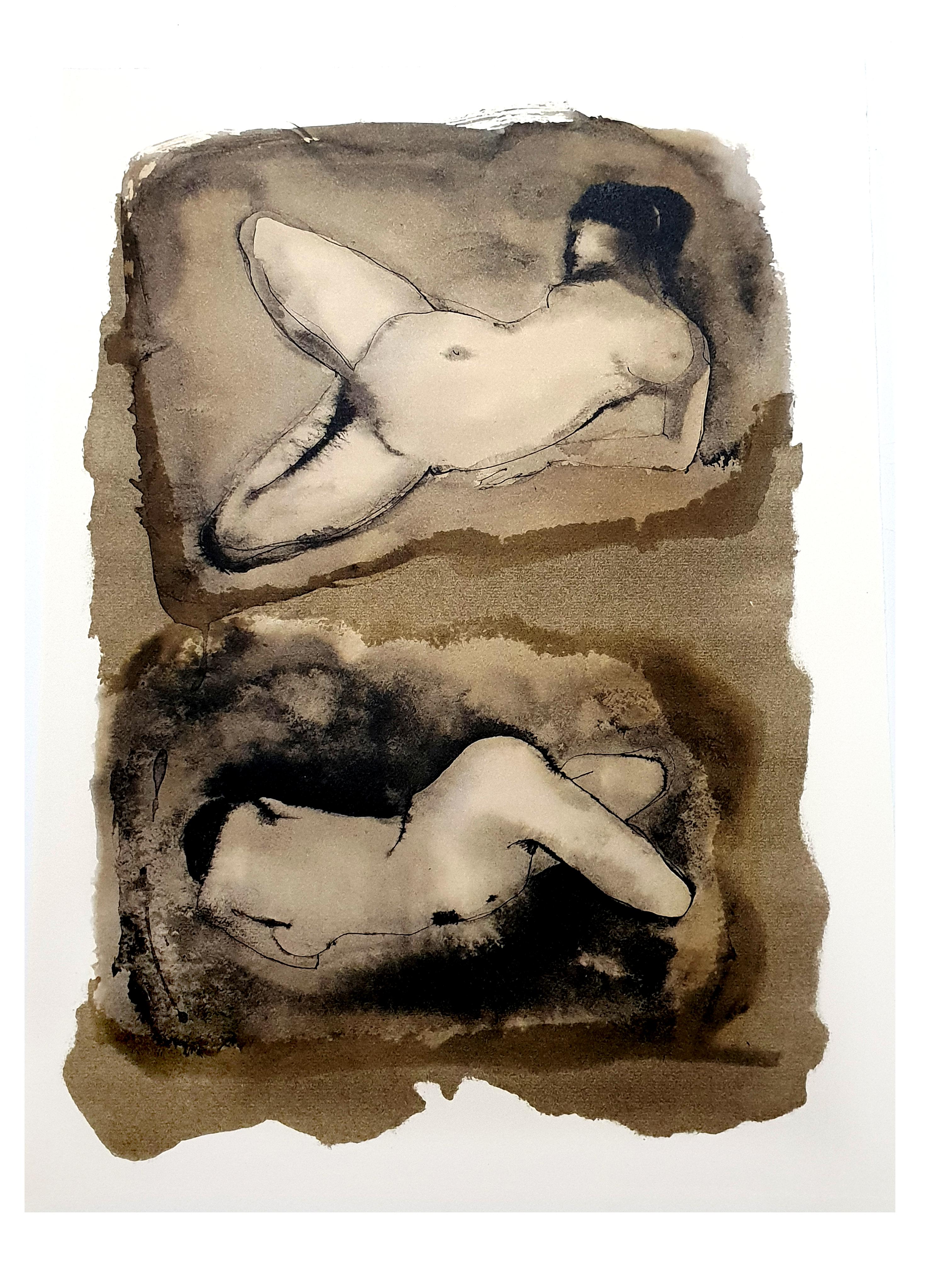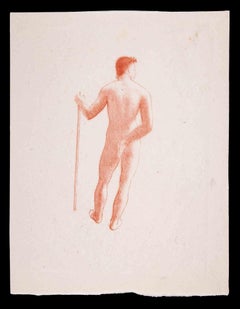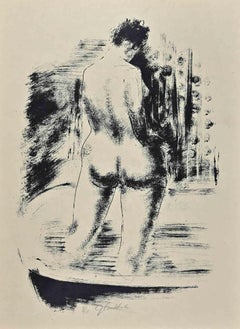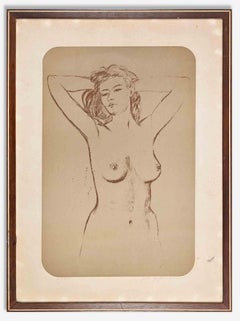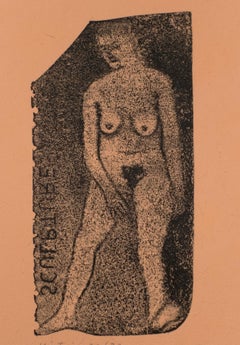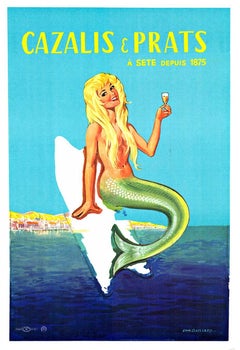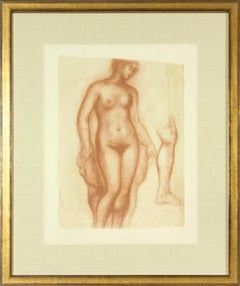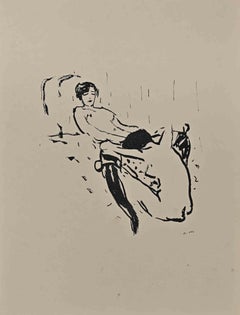
Erotic Scene - Lithograph by Albert Marquet - 1920s
Want more images or videos?
Request additional images or videos from the seller
1 of 2
Albert MarquetErotic Scene - Lithograph by Albert Marquet - 1920s1920s
1920s
Price:$901.07
About the Item
- Creator:Albert Marquet (1875-1947, French)
- Creation Year:1920s
- Dimensions:Height: 13 in (33 cm)Width: 9.85 in (25 cm)Depth: 0.04 in (1 mm)
- Medium:
- Movement & Style:
- Period:
- Framing:Framing Options Available
- Condition:Insurance may be requested by customers as additional service, contact us for more information.
- Gallery Location:Roma, IT
- Reference Number:Seller: T-1349601stDibs: LU650311176812
Albert Marquet
Albert Marquet was born in Bordeaux in 1875. He studied at the School of Decorative Arts in Paris from 1890-1894, where he became friends with Henri Matisse. He continued his studies at the School of Fine Arts in the studio of Gustave Moreau, from 1895-1898. Albert Marquet paints landscapes and post-impressionist nudes that become more and more colourful and simplified; he expresses himself - following the example of Matisse - in pure tones. At the beginning of the century Modern artist Marquet exhibits in the Parisian Salons (the Salon des Indépendants, the Salon d’Automne) and takes part in numerous art events organised abroad (Russia, the United States, etc.). Marquet meets Dufy and Camoin. He is present at the famous ‘Cage aux Fauves’, that makes a scandal at the Salon d’Automne in 1905; at this time he paints canvases with forms surrounded by black, representing portraits, the Normandy beaches or animated scenes. The artist represents the Seine, often views seen from above and creates variations of themes by changing the time of day and using different lighting. His first solo exhibition is organized in 1907 at the Druet Gallery in Paris. At the beginning of the 1910’s, Marquet paints a series of realistic female nudes. He is unfit for military service in 1914. From the 1920’s until the 1940’s, Albert Marquet takes numerous trips to Europe and Africa that are for him, sources of inspiration in his art, a means for the man to see and learn about other cultures. Albert Marquet’s theme of predilection is his landscapes close to the water (the sea, lake, or river), landscapes that he treats using soft tones that are dominantly grey. Albert Marquet, a sensitive man often well-liked for his modesty, died in 1947 in Paris.
About the Seller
4.9
Platinum Seller
Premium sellers with a 4.7+ rating and 24-hour response times
1stDibs seller since 2017
7,581 sales on 1stDibs
Typical response time: 2 hours
Authenticity Guarantee
In the unlikely event there’s an issue with an item’s authenticity, contact us within 1 year for a full refund. DetailsMoney-Back Guarantee
If your item is not as described, is damaged in transit, or does not arrive, contact us within 7 days for a full refund. Details24-Hour Cancellation
You have a 24-hour grace period in which to reconsider your purchase, with no questions asked.Vetted Professional Sellers
Our world-class sellers must adhere to strict standards for service and quality, maintaining the integrity of our listings.Price-Match Guarantee
If you find that a seller listed the same item for a lower price elsewhere, we’ll match it.Trusted Global Delivery
Our best-in-class carrier network provides specialized shipping options worldwide, including custom delivery.More From This Seller
View AllNude Woman with Tree - Original Lithograph by Jacques Busse - Mid 20th Century
By Jacques Busse
Located in Roma, IT
Nude woman with tree is an original artwork realized by French artist Jacques Busse (1922-2004)
Lithograph print.
Hand-signed on the lower right in pe...
Category
Mid-20th Century Modern Figurative Prints
Materials
Lithograph
Nude - Original Lithograph byPaul Belmondo - Mid-20th Century
Located in Roma, IT
Nude is an Original Lithograph print realized by French artist Paul Belmondo (1898-1982)
It is not signed and dated but we can attribute the period to...
Category
Mid-20th Century Modern Figurative Prints
Materials
Lithograph
Female Nude - Lithograph by Nicolas Gloutchenko - 1928
By Nicolas Gloutchenko
Located in Roma, IT
Female nude is an original artwork realized by Nicolas Gloutchenko in 1928.
Lithograph on paper.
Hand-signed in pencil by the artist on the lower and numbered, edition of 8/12 prin...
Category
1920s Modern Figurative Prints
Materials
Lithograph
$252 Sale Price
25% Off
Nude Woman - Lithograph by Guglielmo Coladonato - Mid 20th Century
Located in Roma, IT
Nude woman is an original modern artwork realized in mid-20th century by the artist Guglielmo Coladonato.
Lithograph on paper.
Signature an hand written dedication on the lower ma...
Category
Mid-20th Century Modern Figurative Prints
Materials
Lithograph
Erotic Scene - Lithograph by Albert Marquet - 1920s
By Albert Marquet
Located in Roma, IT
Erotic Scene is a beautiful lithograph on ivory-colored paper, realized in the 1920s by Albert Marquet (Bordeaux, 1875 - Paris,1947).
Monogrammed on the plate on the lower margin. ...
Category
1920s Modern Figurative Prints
Materials
Lithograph
Erotic Scene - Lithograph by Albert Marquet - 1920s
By Albert Marquet
Located in Roma, IT
Erotic Scene is a beautiful lithograph on ivory-colored paper, realized in the 1920s by Albert Marquet (Bordeaux, 1875 - Paris,1947).
Monogrammed on the plate on the lower margin. ...
Category
1920s Modern Figurative Prints
Materials
Lithograph
You May Also Like
Nude Sculpture R.B. Kitaj drawing of nude woman on handmade orange paper print
By Ronald Brooks Kitaj
Located in New York, NY
Here Kitaj depicts a sculpture of a nude woman, shaded delicately in black, printed on wonderfully textured handmade muted orange paper. The woman’s hand reaches to the inside of her...
Category
Late 20th Century Modern Nude Prints
Materials
Lithograph
Original CAZALIS & PRATS Grand Cru Mermaid vintage French liquor poster
Located in Spokane, WA
Original CAZALIS & PRATS since 1875. Artist: Emm. Gaillard. Size: 13" x 19.5". Professionally acid-free archival linen backed and ready to frame. Note that a small ink printing line ...
Category
1950s American Modern Nude Prints
Materials
Lithograph
Untitled nude woman framed lithograph by artist Aristide Maillol
By Aristide Maillol
Located in Boca Raton, FL
Framed lithograph of a female nude pastel by artist Aristide Maillol. Image size: 12 1/2 x 9 1/2 inches. Framed under glass in wooden frame.
Category
20th Century Modern Figurative Prints
Materials
Lithograph
Nude Lying Down framed lithograph of woman by artist Aristide Maillol
By Aristide Maillol
Located in Boca Raton, FL
Framed lithograph of a female Nude Lying Down pastel by artist Aristide Maillol. Image size: 9 1/4 x 14 1/2 inches. Framed under glass in wooden frame.
Category
20th Century Modern Figurative Prints
Materials
Lithograph
Marc Chagall - Moses with Tablets of Stone - Original Lithograph
By Marc Chagall
Located in Collonge Bellerive, Geneve, CH
Marc Chagall, Original Lithograph depicting an instant of the Bible.
Technique: Original lithograph in colours
Year: 1956
Sizes: 35,5 x 26 cm / 14" x 10.2" (sheet)
Published by: Éditions de la Revue Verve, Tériade, Paris
Printed by: Atelier Mourlot, Paris
Documentation / References: Mourlot, F., Chagall Lithograph [II] 1957-1962, A. Sauret, Monte Carlo 1963, nos. 234 and 257
Marc Chagall (born in 1887)
Marc Chagall was born in Belarus in 1887 and developed an early interest in art. After studying painting, in 1907 he left Russia for Paris, where he lived in an artist colony on the city’s outskirts. Fusing his own personal, dreamlike imagery with hints of the fauvism and cubism popular in France at the time, Chagall created his most lasting work—including I and the Village (1911)—some of which would be featured in the Salon des Indépendants exhibitions. After returning to Vitebsk for a visit in 1914, the outbreak of WWI trapped Chagall in Russia. He returned to France in 1923 but was forced to flee the country and Nazi persecution during WWII. Finding asylum in the U.S., Chagall became involved in set and costume design before returning to France in 1948. In his later years, he experimented with new art forms and was commissioned to produce numerous large-scale works. Chagall died in St.-Paul-de-Vence in 1985.
The Village
Marc Chagall was born in a small Hassidic community on the outskirts of Vitebsk, Belarus, on July 7, 1887. His father was a fishmonger, and his mother ran a small sundries shop in the village. As a child, Chagall attended the Jewish elementary school, where he studied Hebrew and the Bible, before later attending the Russian public school. He began to learn the fundamentals of drawing during this time, but perhaps more importantly, he absorbed the world around him, storing away the imagery and themes that would feature largely in most of his later work.
At age 19 Chagall enrolled at a private, all-Jewish art school and began his formal education in painting, studying briefly with portrait artist Yehuda Pen. However, he left the school after several months, moving to St. Petersburg in 1907 to study at the Imperial Society for the Protection of Fine Arts. The following year, he enrolled at the Svanseva School, studying with set designer Léon Bakst, whose work had been featured in Sergei Diaghilev's Ballets Russes. This early experience would prove important to Chagall’s later career as well.
Despite this formal instruction, and the widespread popularity of realism in Russia at the time, Chagall was already establishing his own personal style, which featured a more dreamlike unreality and the people, places and imagery that were close to his heart. Some examples from this period are his Window Vitebsk (1908) and My Fianceé with Black Gloves (1909), which pictured Bella Rosenfeld, to whom he had recently become engaged.
The Beehive
Despite his romance with Bella, in 1911 an allowance from Russian parliament member and art patron Maxim Binaver enabled Chagall to move to Paris, France. After settling briefly in the Montparnasse neighborhood, Chagall moved further afield to an artist colony known as La Ruche (“The Beehive”), where he began to work side by side with abstract painters such as Amedeo Modigliani and Fernand Léger as well as the avant-garde poet Guillaume Apollinaire. At their urging, and under the influence of the wildly popular fauvism and cubism, Chagall lightened his palette and pushed his style ever further from reality. I and the Village (1911) and Homage to Apollinaire (1912) are among his early Parisian works, widely considered to be his most successful and representative period.
Though his work stood stylistically apart from his cubist contemporaries, from 1912 to 1914 Chagall exhibited several paintings at the annual Salon des Indépendants exhibition, where works by the likes of Juan Gris, Marcel Duchamp and Robert Delaunay were causing a stir in the Paris art world. Chagall’s popularity began to spread beyond La Ruche, and in May 1914 he traveled to Berlin to help organize his first solo exhibition, at Der Sturm Gallery. Chagall remained in the city until the highly acclaimed show opened that June. He then returned to Vitebsk, unaware of the fateful events to come.
War, Peace and Revolution
In August 1914 the outbreak of World War I precluded Chagall’s plans to return to Paris. The conflict did little to stem the flow of his creative output, however, instead merely giving him direct access to the childhood scenes so essential to his work, as seen in paintings such as Jew in Green (1914) and Over Vitebsk (1914). His paintings from this period also occasionally featured images of the war’s impact on the region, as with Wounded Soldier (1914) and Marching (1915). But despite the hardships of life during wartime, this would also prove to be a joyful period for Chagall. In July 1915 he married Bella, and she gave birth to a daughter, Ida, the following year. Their appearance in works such as Birthday (1915), Bella and Ida by the Window (1917) and several of his “Lovers” paintings give a glimpse of the island of domestic bliss that was Chagall’s amidst the chaos.
To avoid military service and stay with his new family, Chagall took a position as a clerk in the Ministry of War Economy in St. Petersburg. While there he began work on his autobiography and also immersed himself in the local art scene, befriending novelist Boris Pasternak, among others. He also exhibited his work in the city and soon gained considerable recognition. That notoriety would prove important in the aftermath of the 1917 Russian Revolution when he was appointed as the Commissar of Fine Arts in Vitebsk. In his new post, Chagall undertook various projects in the region, including the 1919 founding of the Academy of the Arts. Despite these endeavors, differences among his colleagues eventually disillusioned Chagall. In 1920 he relinquished his position and moved his family to Moscow, the post-revolution capital of Russia.
In Moscow, Chagall was soon commissioned to create sets and costumes for various productions at the Moscow State Yiddish...
Category
1950s Modern Figurative Prints
Materials
Lithograph
Marc Chagall - Moses - Original Lithograph
By Marc Chagall
Located in Collonge Bellerive, Geneve, CH
Marc Chagall, Original Lithograph depicting an instant of the Bible.
Technique: Original lithograph in colours
Year: 1956
Sizes: 35,5 x 26 cm / 14" x 10.2" (sheet)
Published by: Éditions de la Revue Verve, Tériade, Paris
Printed by: Atelier Mourlot, Paris
Documentation / References: Mourlot, F., Chagall Lithograph [II] 1957-1962, A. Sauret, Monte Carlo 1963, nos. 234 and 257
Marc Chagall (born in 1887)
Marc Chagall was born in Belarus in 1887 and developed an early interest in art. After studying painting, in 1907 he left Russia for Paris, where he lived in an artist colony on the city’s outskirts. Fusing his own personal, dreamlike imagery with hints of the fauvism and cubism popular in France at the time, Chagall created his most lasting work—including I and the Village (1911)—some of which would be featured in the Salon des Indépendants exhibitions. After returning to Vitebsk for a visit in 1914, the outbreak of WWI trapped Chagall in Russia. He returned to France in 1923 but was forced to flee the country and Nazi persecution during WWII. Finding asylum in the U.S., Chagall became involved in set and costume design before returning to France in 1948. In his later years, he experimented with new art forms and was commissioned to produce numerous large-scale works. Chagall died in St.-Paul-de-Vence in 1985.
The Village
Marc Chagall was born in a small Hassidic community on the outskirts of Vitebsk, Belarus, on July 7, 1887. His father was a fishmonger, and his mother ran a small sundries shop in the village. As a child, Chagall attended the Jewish elementary school, where he studied Hebrew and the Bible, before later attending the Russian public school. He began to learn the fundamentals of drawing during this time, but perhaps more importantly, he absorbed the world around him, storing away the imagery and themes that would feature largely in most of his later work.
At age 19 Chagall enrolled at a private, all-Jewish art school and began his formal education in painting, studying briefly with portrait artist Yehuda Pen. However, he left the school after several months, moving to St. Petersburg in 1907 to study at the Imperial Society for the Protection of Fine Arts. The following year, he enrolled at the Svanseva School, studying with set designer Léon Bakst, whose work had been featured in Sergei Diaghilev's Ballets Russes. This early experience would prove important to Chagall’s later career as well.
Despite this formal instruction, and the widespread popularity of realism in Russia at the time, Chagall was already establishing his own personal style, which featured a more dreamlike unreality and the people, places and imagery that were close to his heart. Some examples from this period are his Window Vitebsk (1908) and My Fianceé with Black Gloves (1909), which pictured Bella Rosenfeld, to whom he had recently become engaged.
The Beehive
Despite his romance with Bella, in 1911 an allowance from Russian parliament member and art patron Maxim Binaver enabled Chagall to move to Paris, France. After settling briefly in the Montparnasse neighborhood, Chagall moved further afield to an artist colony known as La Ruche (“The Beehive”), where he began to work side by side with abstract painters such as Amedeo Modigliani and Fernand Léger as well as the avant-garde poet Guillaume Apollinaire. At their urging, and under the influence of the wildly popular fauvism and cubism, Chagall lightened his palette and pushed his style ever further from reality. I and the Village (1911) and Homage to Apollinaire (1912) are among his early Parisian works, widely considered to be his most successful and representative period.
Though his work stood stylistically apart from his cubist contemporaries, from 1912 to 1914 Chagall exhibited several paintings at the annual Salon des Indépendants exhibition, where works by the likes of Juan Gris, Marcel Duchamp and Robert Delaunay were causing a stir in the Paris art world. Chagall’s popularity began to spread beyond La Ruche, and in May 1914 he traveled to Berlin to help organize his first solo exhibition, at Der Sturm Gallery. Chagall remained in the city until the highly acclaimed show opened that June. He then returned to Vitebsk, unaware of the fateful events to come.
War, Peace and Revolution
In August 1914 the outbreak of World War I precluded Chagall’s plans to return to Paris. The conflict did little to stem the flow of his creative output, however, instead merely giving him direct access to the childhood scenes so essential to his work, as seen in paintings such as Jew in Green (1914) and Over Vitebsk (1914). His paintings from this period also occasionally featured images of the war’s impact on the region, as with Wounded Soldier (1914) and Marching (1915). But despite the hardships of life during wartime, this would also prove to be a joyful period for Chagall. In July 1915 he married Bella, and she gave birth to a daughter, Ida, the following year. Their appearance in works such as Birthday (1915), Bella and Ida by the Window (1917) and several of his “Lovers” paintings give a glimpse of the island of domestic bliss that was Chagall’s amidst the chaos.
To avoid military service and stay with his new family, Chagall took a position as a clerk in the Ministry of War Economy in St. Petersburg. While there he began work on his autobiography and also immersed himself in the local art scene, befriending novelist Boris Pasternak, among others. He also exhibited his work in the city and soon gained considerable recognition. That notoriety would prove important in the aftermath of the 1917 Russian Revolution when he was appointed as the Commissar of Fine Arts in Vitebsk. In his new post, Chagall undertook various projects in the region, including the 1919 founding of the Academy of the Arts. Despite these endeavors, differences among his colleagues eventually disillusioned Chagall. In 1920 he relinquished his position and moved his family to Moscow, the post-revolution capital of Russia.
In Moscow, Chagall was soon commissioned to create sets and costumes for various productions at the Moscow State Yiddish...
Category
1950s Modern Figurative Prints
Materials
Lithograph
Recently Viewed
View AllMore Ways To Browse
Picasso Clown
Picasso In Antibes
Picasso Lithograph Gold
Raoul Dufy Etchings
Alfred Maurice
Antique Postcards 1900
Corneille Guillaume Beverloo
Dali Hell
Donald Duck
Four Seasons Plates
Leroy Neiman Signed
Marc Chagall The Wedding
Metal Wash Stand
Paradis Paris
Picasso Acrobat
Silver Violin
Torero Painting
Vintage Day Of The Dead
